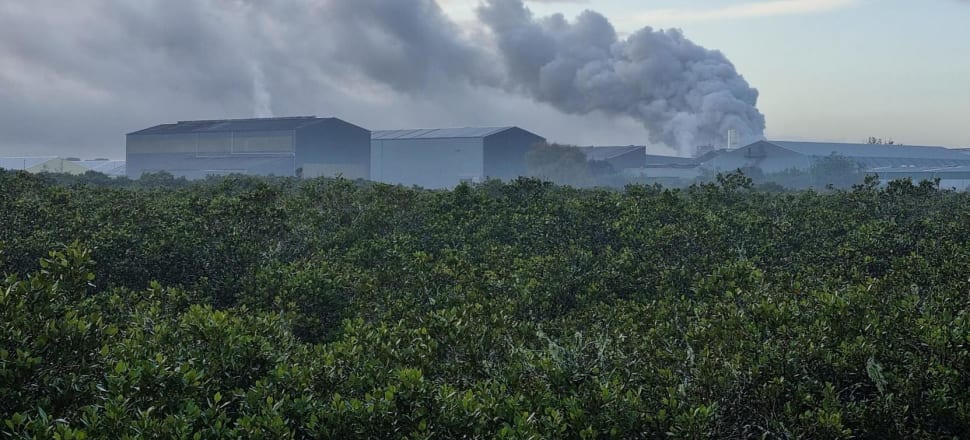
Buried deep in the "organised chaos" of piles of scrap metal are tiny hazards. And as The Detail finds out, they're a headache for both the scrap metal industry and Fire and Emergency.
Your head's swiveling, checking front and back, and looking overhead for any movement. You're listening for creaks and groans, and trying to stay calm, all while breathing through a respirator.
That's how fire investigator Pete Gallagher describes the hazards of going deep into a pile of scrap metal to probe the cause of a fire.
He's talking to The Detail after a blaze last month at the Sims Metal scrap yard in Favona, South Auckland, caused widespread disruption to people's lives.
The fire burned for 30 hours and sent toxic smoke across parts of the city.
The cause of the fire is still not known, but it highlights the many hazards the industry faces – and the growing complexities of managing scrapyards – says Gallagher, Fire and Emergency's manager of fire investigation and risk reduction.
He's investigated similar scrap yard fires and describes the remains as a jumble of sticks on the ground.
"We're trying to get in underneath and pull out some of those sticks and see exactly what's caused the fire to start. Like the game of pick up sticks that we played with as children, there's always the possibility that everything will come collapsing down on top of you."
Gallagher works closely with scrap yard operators on safe practices, as the industry grapples with rapid changes in materials and technology, such as lithium batteries.
"There are a number of causes of scrap metal fires in New Zealand and in wreckers' yards as well. You've got grinding and cutting equipment, gas welding equipment, so there are open flames.
"But you've also got big heavy machinery that just crushes and cuts the steel, and as those cutting bars work their way through the steel they generate a lot of heat as well," says Gallagher.
"And then on top of that you've got items which are not supposed to be in the metal pile that are there. This is where we have the problem with incorrectly disposed materials."
Industry leader Korina Kirk says, despite several checks for hazardous products during the process – from the time the metal arrives at the gate – unwanted materials occasionally get through.
For example, lithium batteries are an explosion risk, she says, but many people are unaware they are so widely used, in things like cars, toys and watches.
"Lithium ion batteries are only an issue if they get compromised," says Kirk, a board member of the New Zealand Association of Metal Recyclers.
And even then, they may not start a thermal runaway, where a battery gets overheated and eventually explodes or bursts into flames.
Kirk grew up in the business in Christchurch and has seen "huge changes" in an industry that is worth several hundred million dollars in annual exports.
It's gone from the World War II "rag and bone" operations, to scrapyards with heavy machinery worth hundreds of thousands of dollars.
She says she worries the fire at Sims Metal gives people a bad image of the industry.
"I like to say to people, 'You wouldn't deal with a plumber who wasn't a master plumber nowadays, would you?' Yet when it comes to metals recycling, people don't seem to apply the same standard."
She urges people to deal with operators affiliated with the association and which work to a code of conduct.
But she says the fire also highlights the changes to the types of materials used in everyday products.
"Look at a car, for instance. It used to be mostly metal, we used to have a good, old solid metal bumper and you could run over anything with that and nothing would happen. Now most of your car is made of smart plastics and stuff and these things are full of different types of chemicals.
"Product design has a lot of responsibility. We've had such a demand for cheaper, lighter materials and consumer goods and we've moved away from metals and into an area where materials are hazardous."
Find out more about the hidden dangers in scrap metal yards by listening to the full podcast episode.
Check out how to listen to and follow The Detail here.
You can also stay up-to-date by liking us on Facebook or following us on Twitter.








